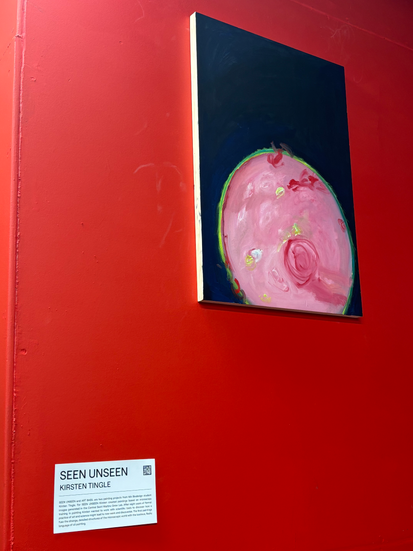The Future is Biodesign
- David Pasia

- Apr 24, 2024
- 2 min read
Updated: May 19, 2024

What is biodesign?
Think the world of Dune combined with Aquaman with a pumping soundscape. More on the last part later. This is what awaits just a few minutes' walk away from Liverpool Street station, at Broadworks, a creative hub, is a gateway into the world of biodesign via a curated exhibition aptly named ‘Future Ecologies’.
Upon entering, visitors were greeted by small terrariums and glass cases containing structures which looked oddly dystopian and extraterrestrial. The exhibition showcased the works and projects of Central Saint Martins students studying MA Biodesign and MA Narrative Environments programs.
On the cusp of an impending climate crisis — perhaps one that is already taking place — biodesign has emerged as a relatively new discipline as an effort to combat the symptoms and effects of climate breakdown.
Written in green font, the pamphlet on offer for guests says: ‘Biodesign emerges as a necessary bridge between humans and nature, using art, science, design, and engineering tools to “rewild humans.”’
Akir Hall, 24, the curator of the exhibition and student of MA Biodesign, says “Biodesign, in general, is design for, with and about nature.”
Akir explains what biodesign is all about / Video by David Pasia
A feast for the eyes and brain
For anyone entering the exhibition blind, the instalments may come across as a barrage of unfamiliar information. Your eyes may not know where to start. And when your eyes do finally rest on something, your brain goes, “well, what am I looking at?”
However, look attentively and you’ll find each instalment comes with a description, and even a QR code, which takes you to a site explaining everything, for the tech savvy. Hall, whose voice carries an understated authority, is also available to take guests around for a guided tour to explain things verbally.
The space is small, but it is utilised to good effect: the displays are organised in a way that guests are taken on a journey. Beyond the alien like terrariums, there were items on display made from agricultural waste as well as glue synthesised from Swarovski’s water waste using bacteria. Some instalments are even available to be touched, adding a tactile aspect to the exhibition.
Different works on display / Images by David Pasia
“I came here to support a friend whose work is on display. I wasn’t quite sure what to expect but I’m definitely walking out of here with some newfound knowledge,” says 23-year-old data analyst, Sachin Issuree.
Some attendees arrived with an already established interest in the world of biodesign. Michaela Pantoja, 24, a tattoo artist says, “Biodesign can exist in many disciplines. For example, in tattooing, there’s research going into different ways we can use tattoo ink and how there might be healing properties to do with the tattoo process.”
“Big up Earth”
The event also boasted of live performances by DJs on the top floor of the building by the terraces. The wind was in full force, but the booming decks and some dancing was sure to warm anyone up. If all else fails, good thing there’s a bar stocked with warming alcohol.
The exhibition was held in collaboration with Lin Kam Art with Hive Curates for ‘Bass Tone Regeneration: Earth Night’ which aims to raise awareness of climate issues and funds for DJs For Climate Action.
“Big up Liverpool Street. Big up London. Big up Earth,” the DJ announces on the mic.
Bass Tone Regeneration by Lin Kam Art / Video by David Pasia

















Comments